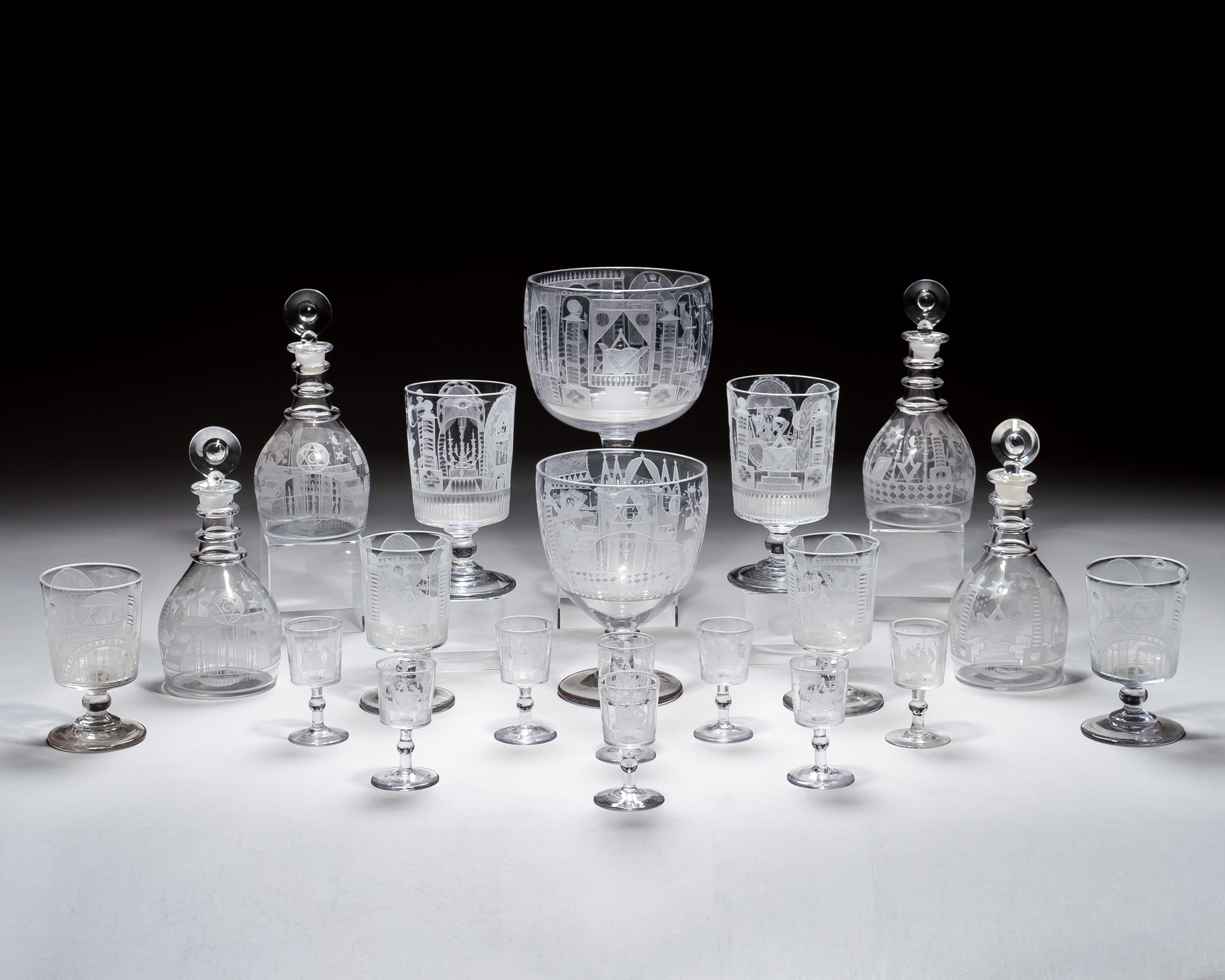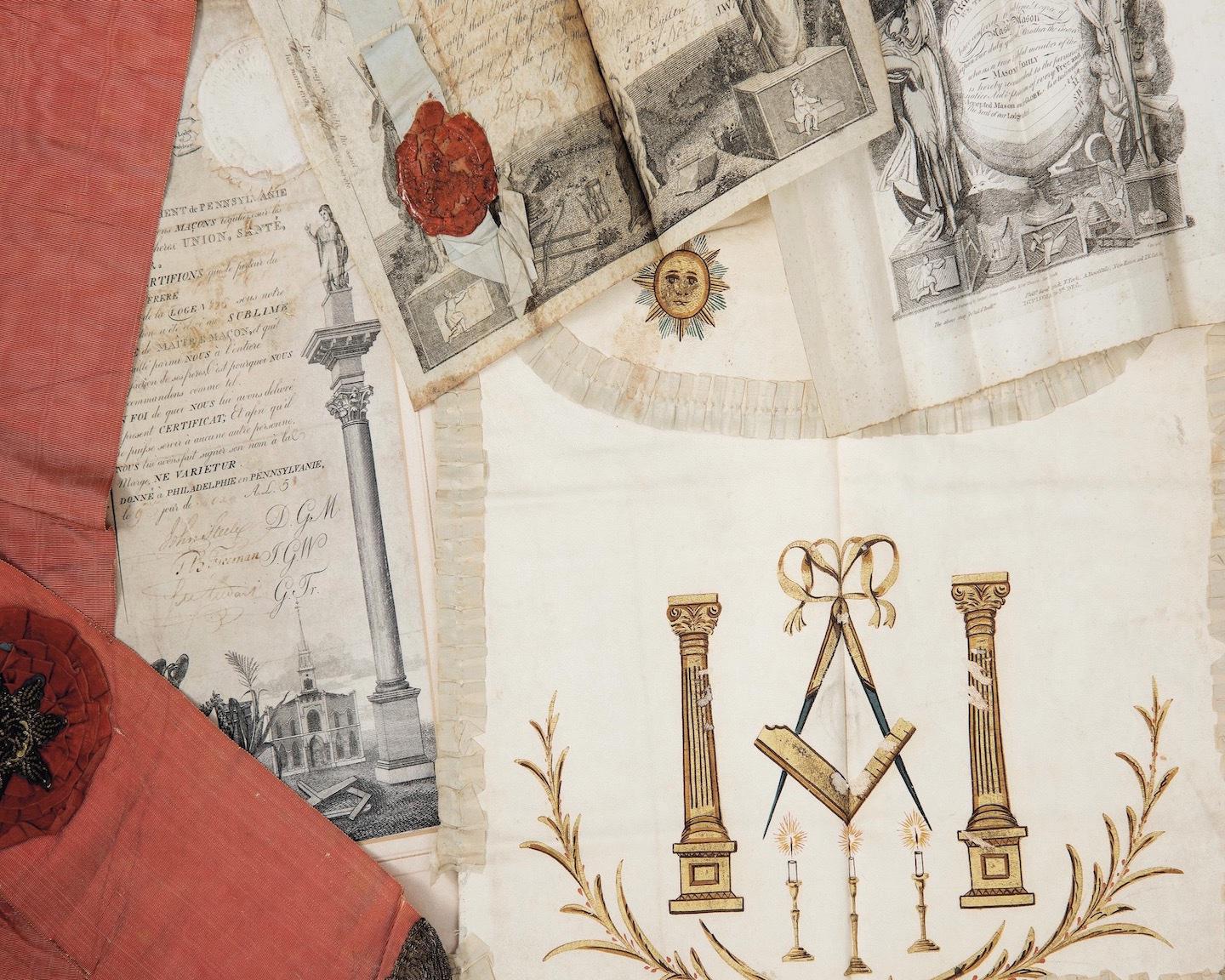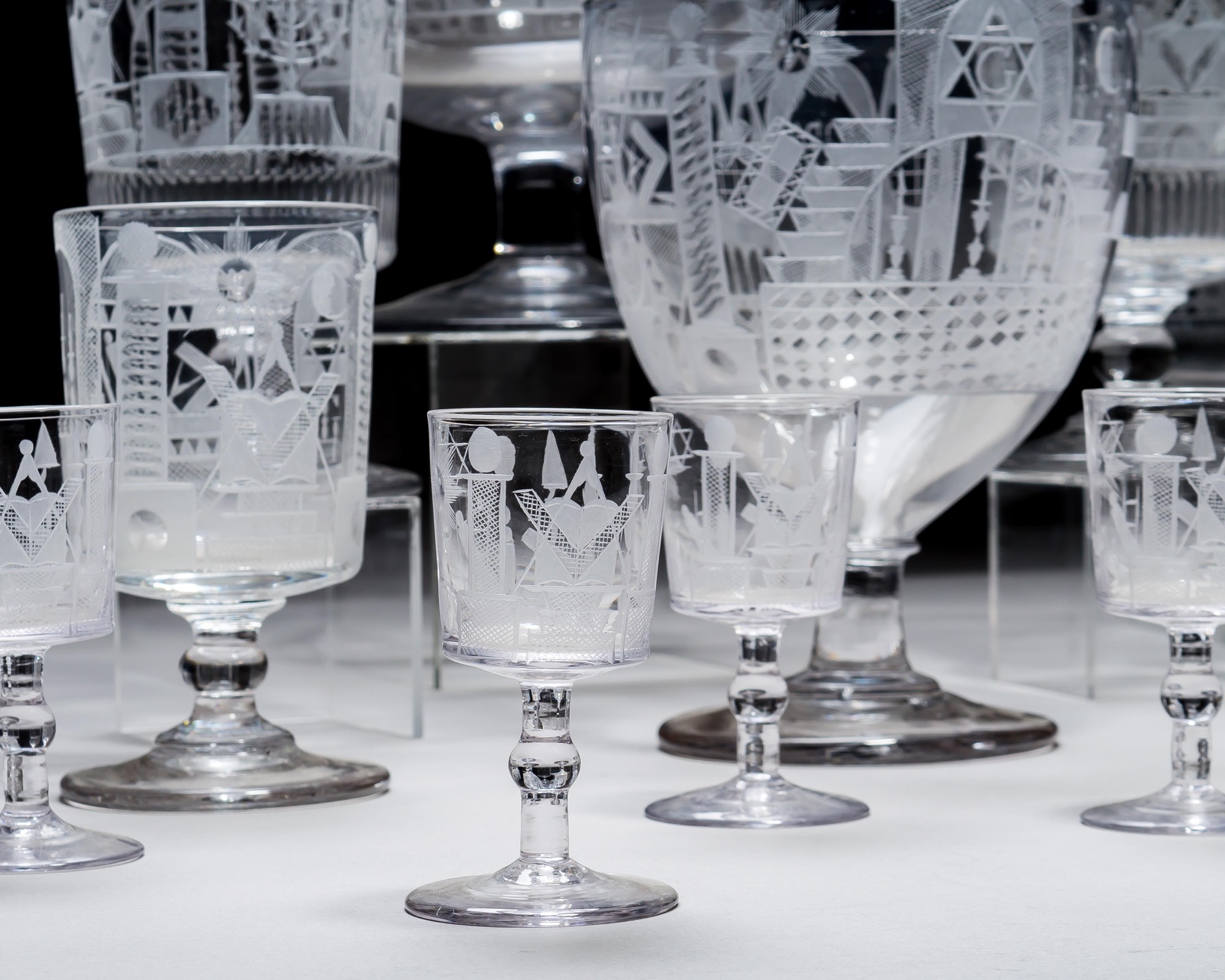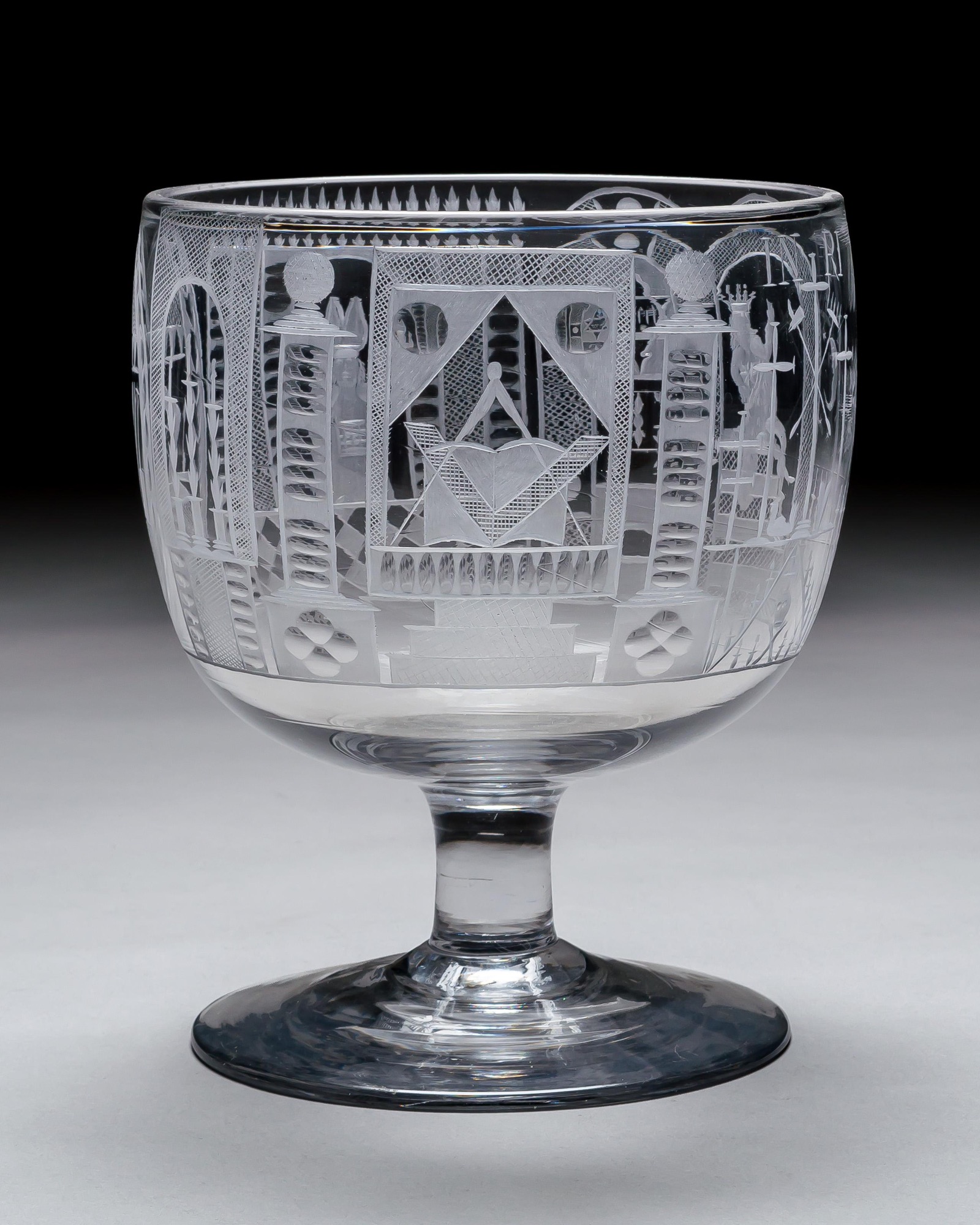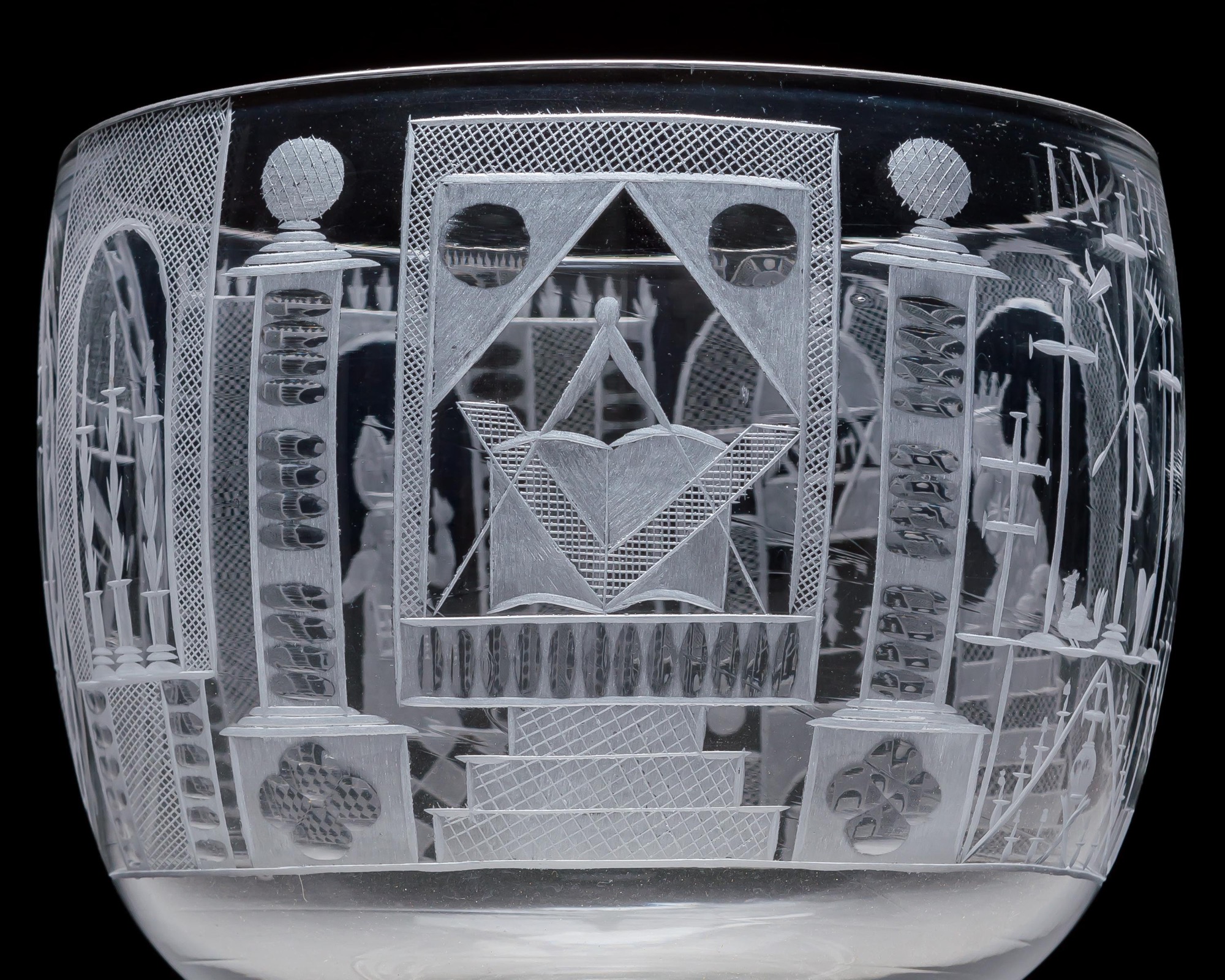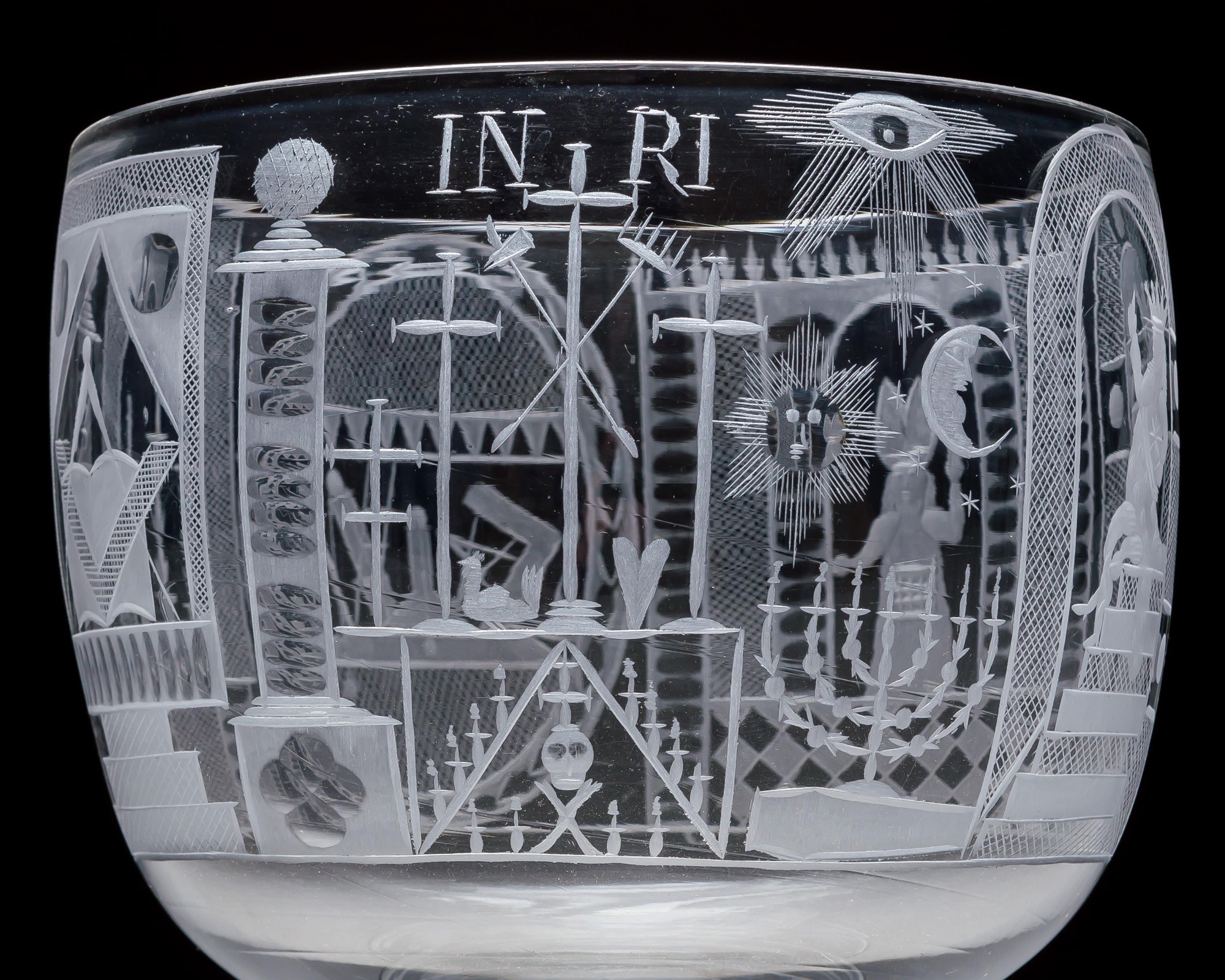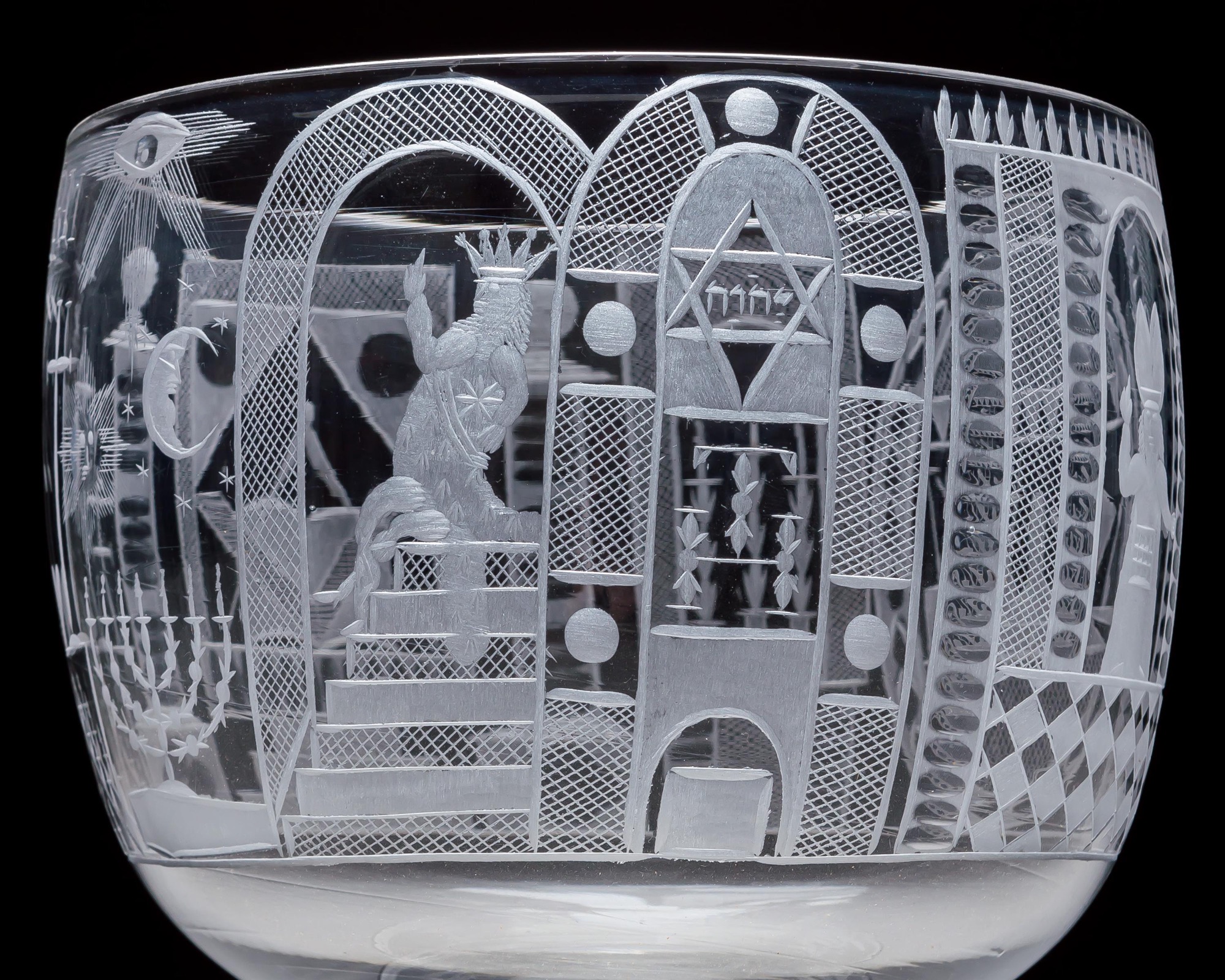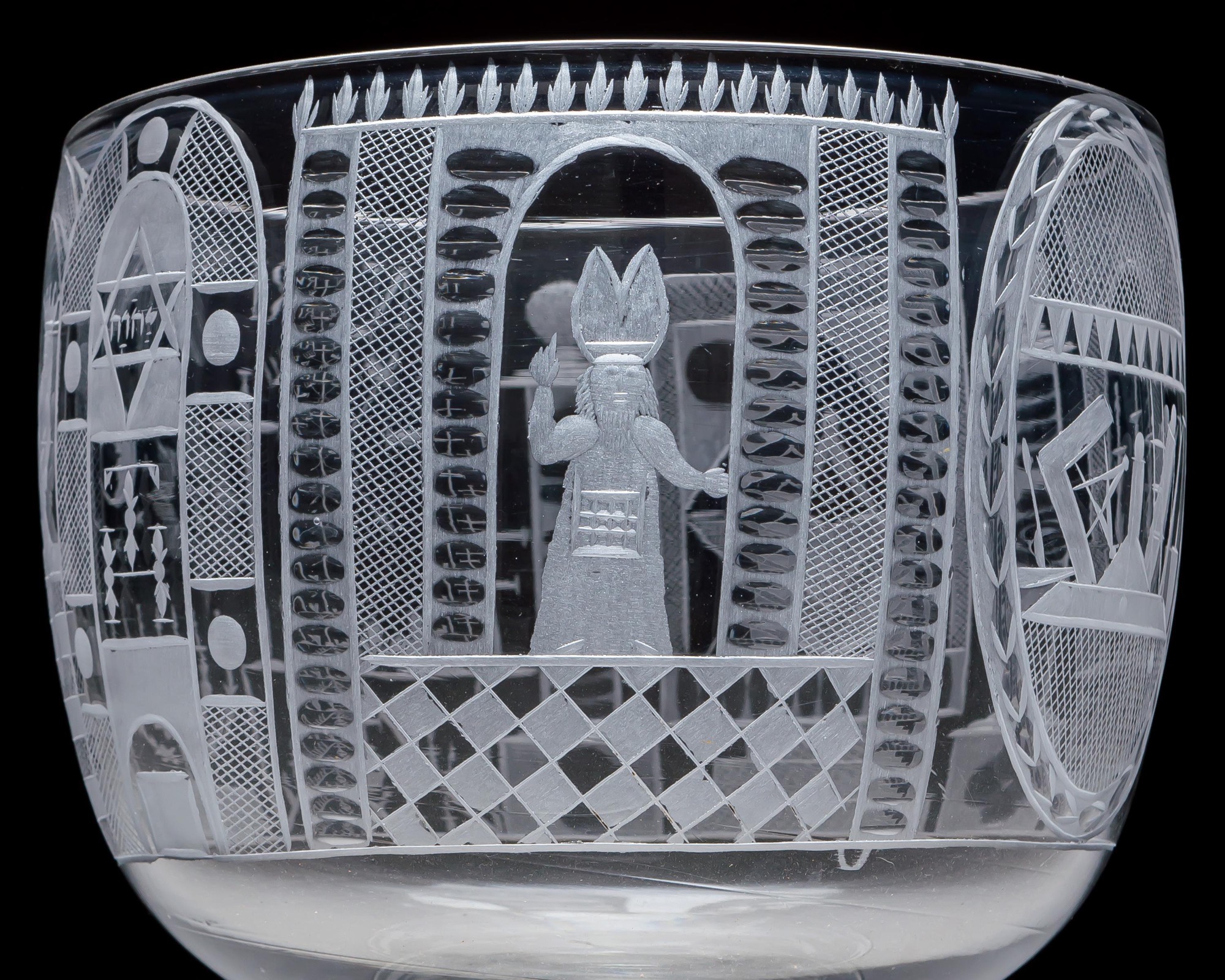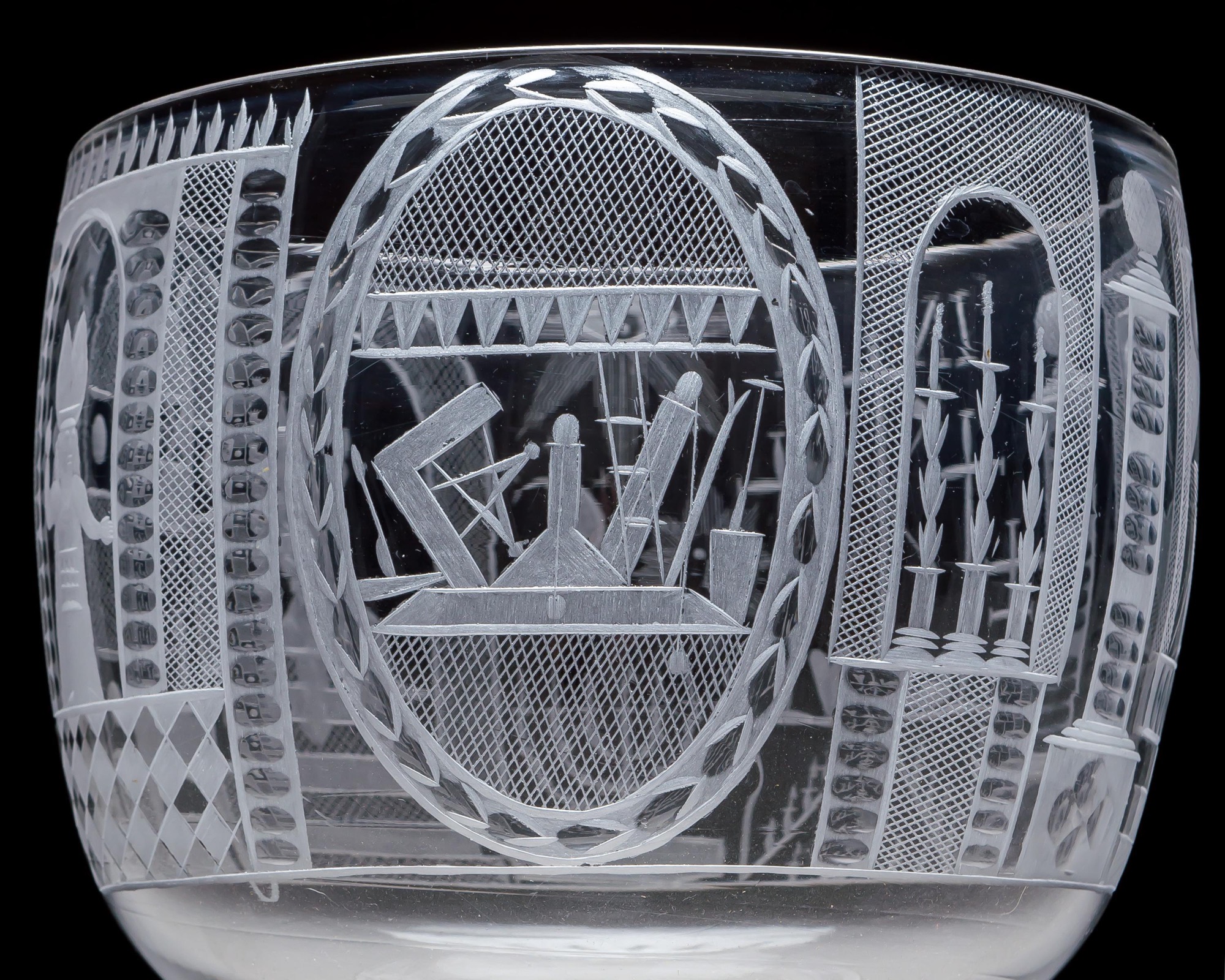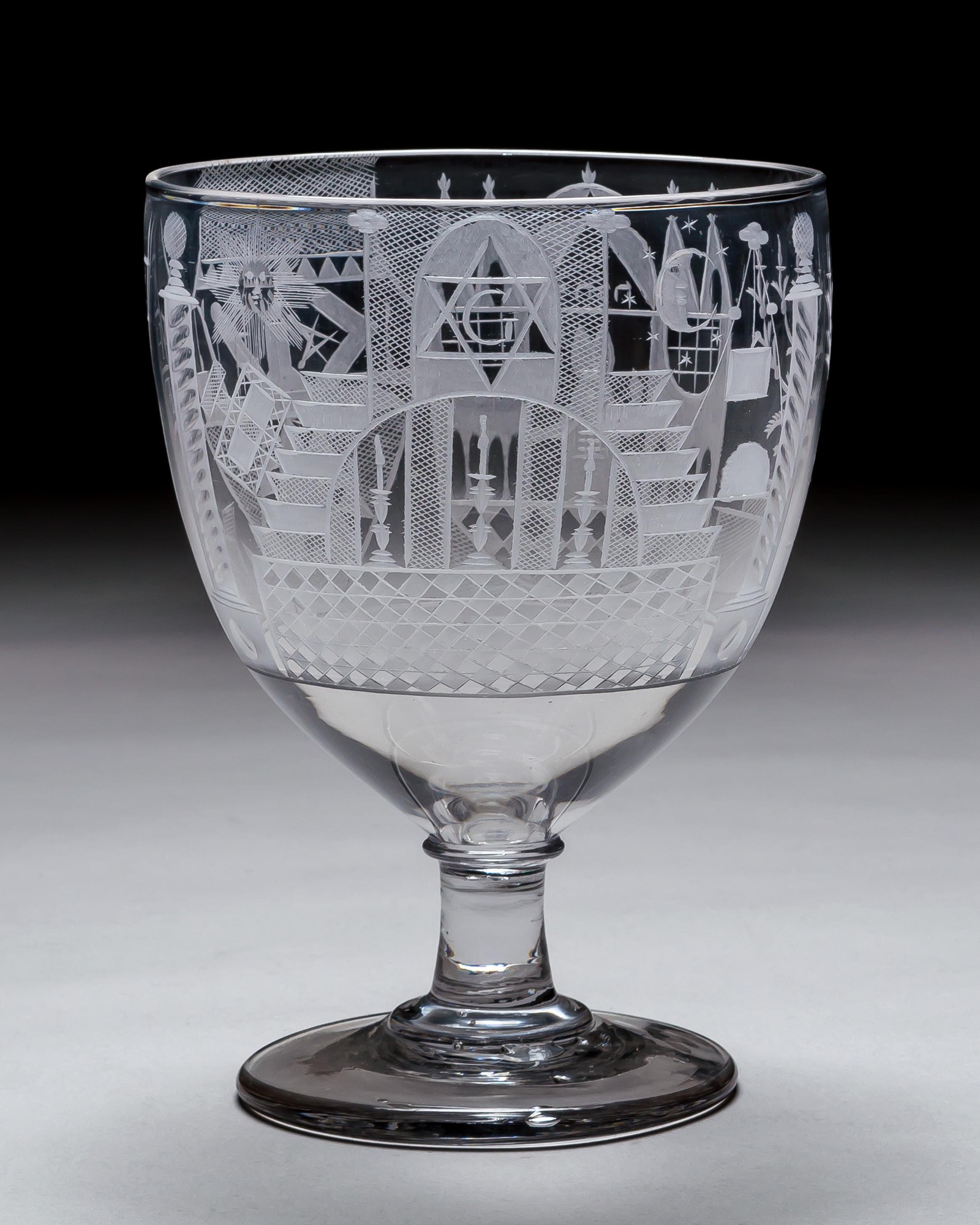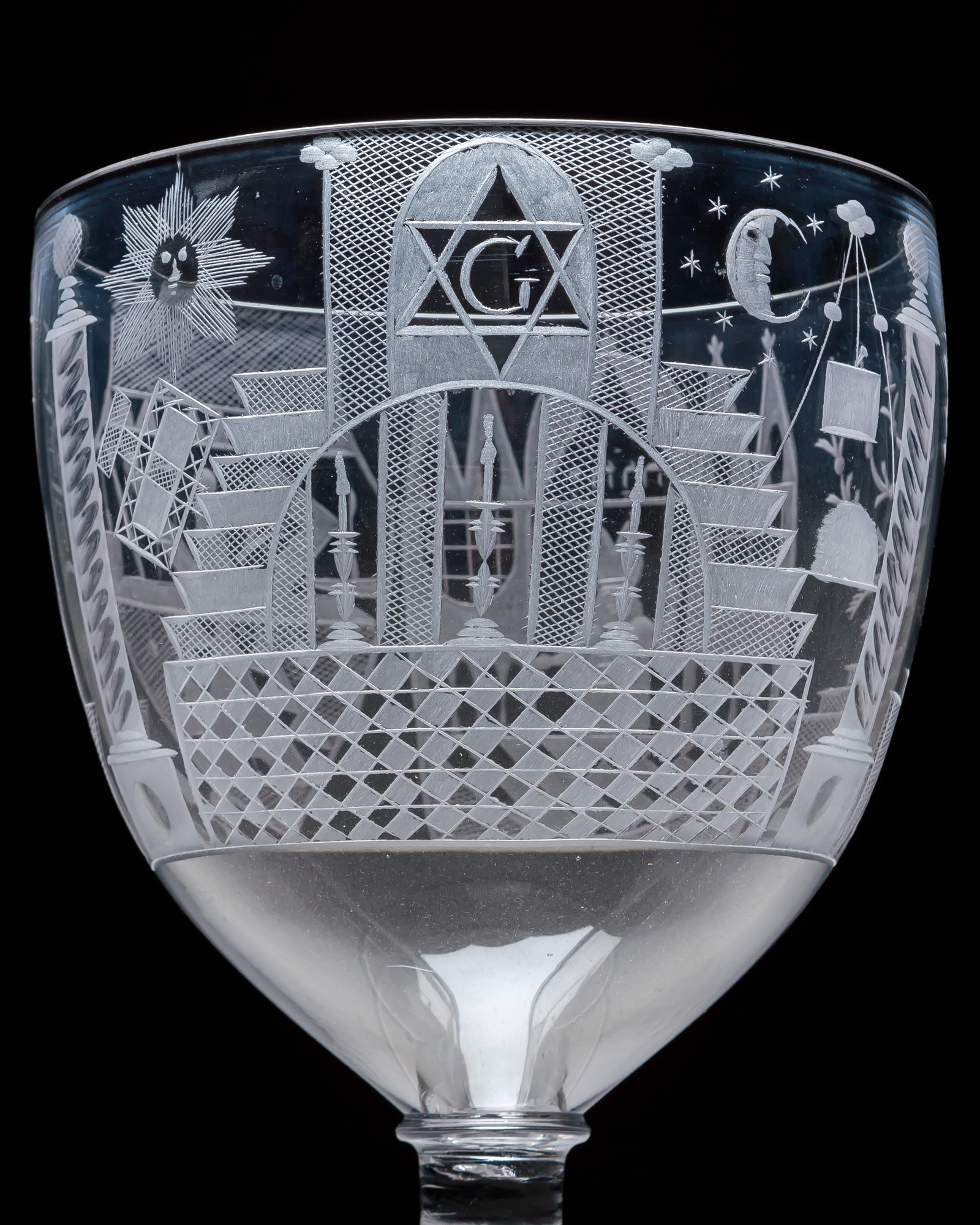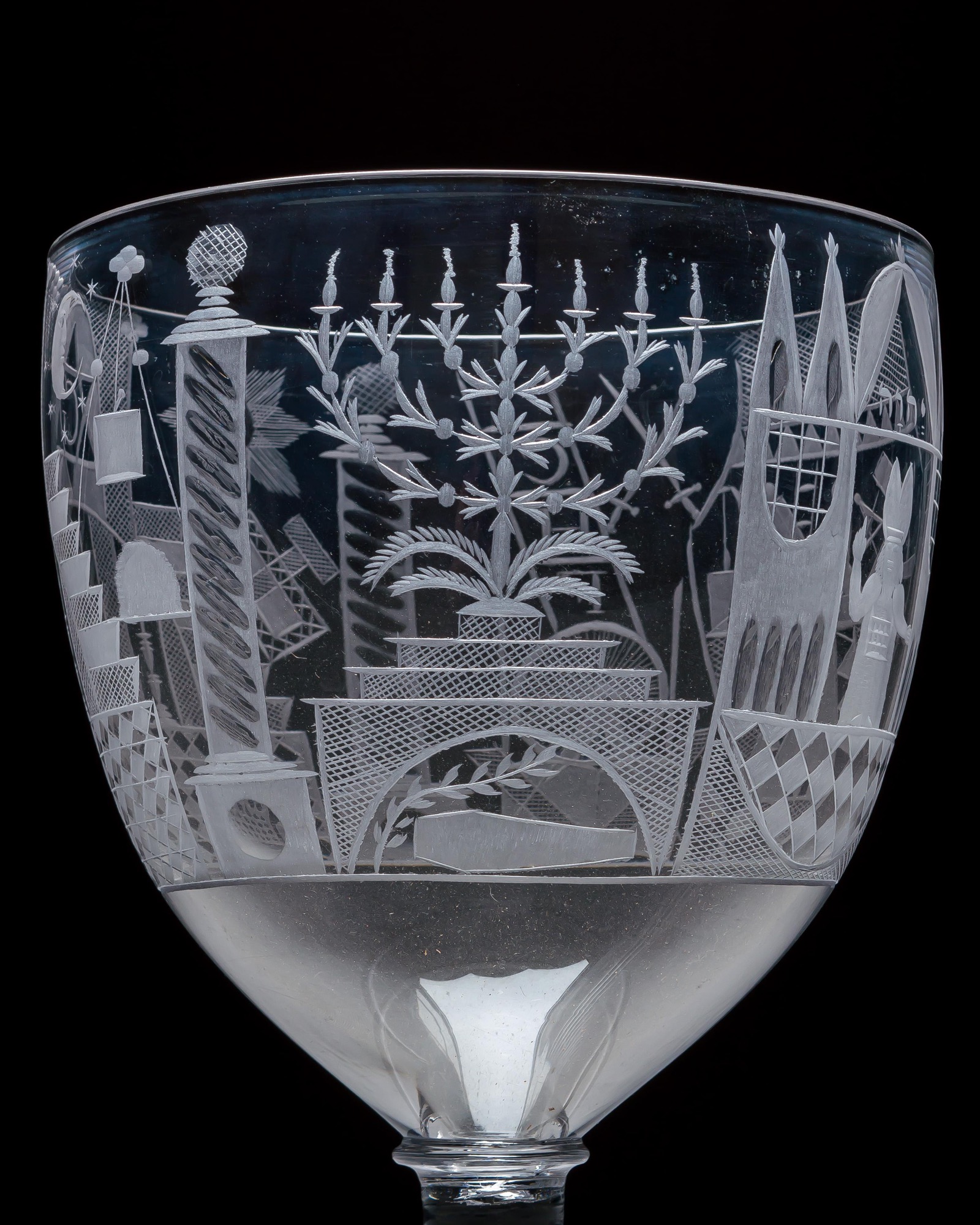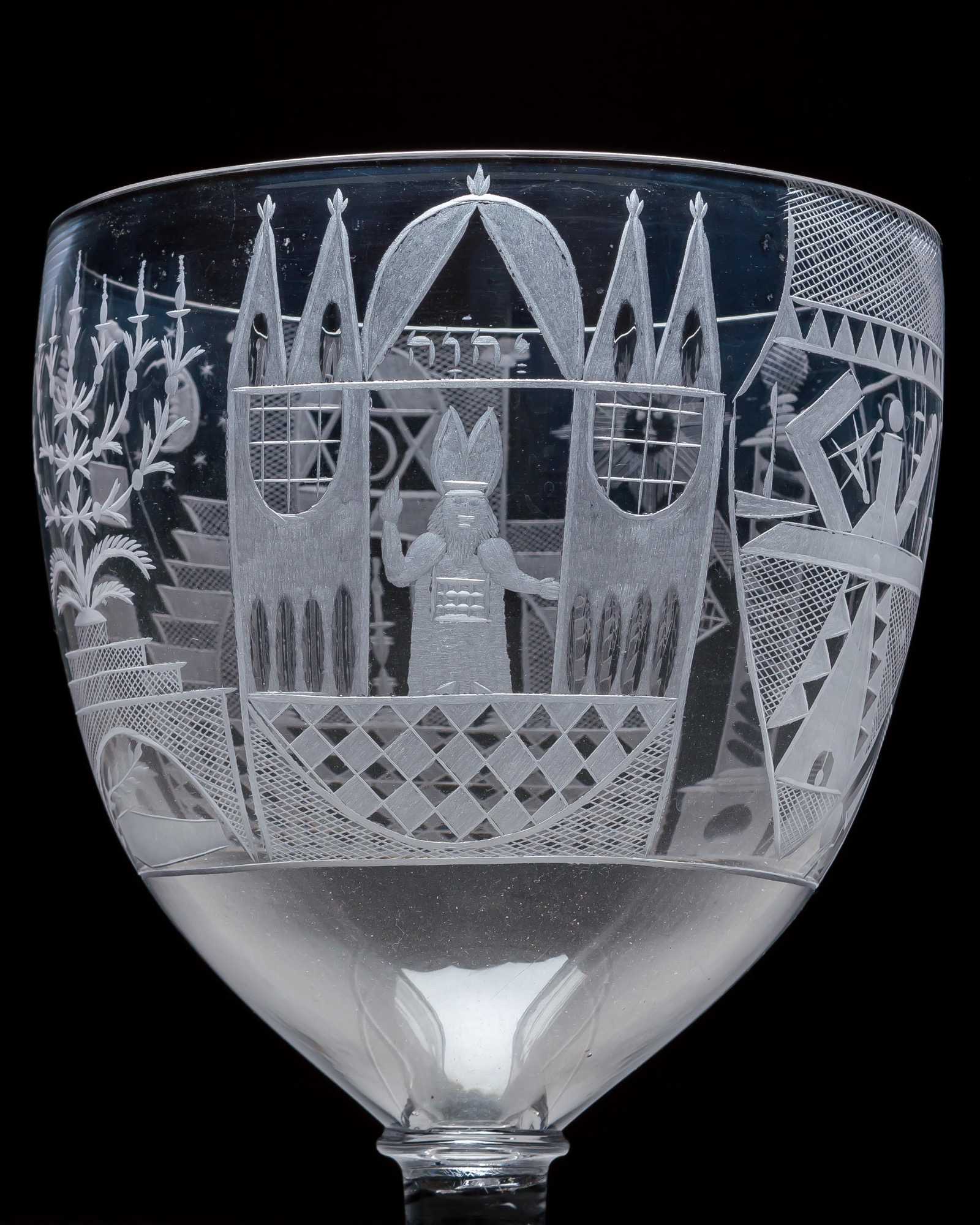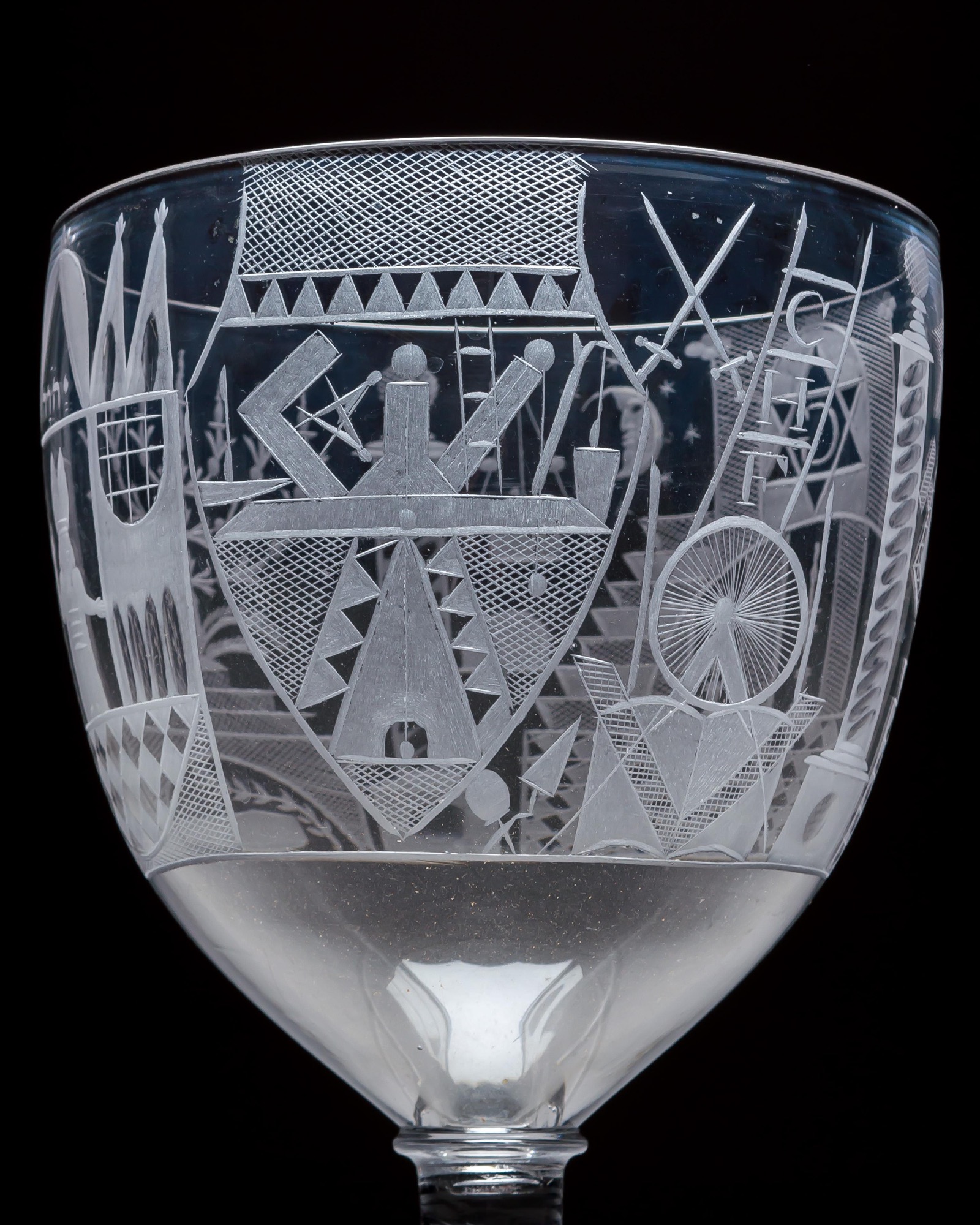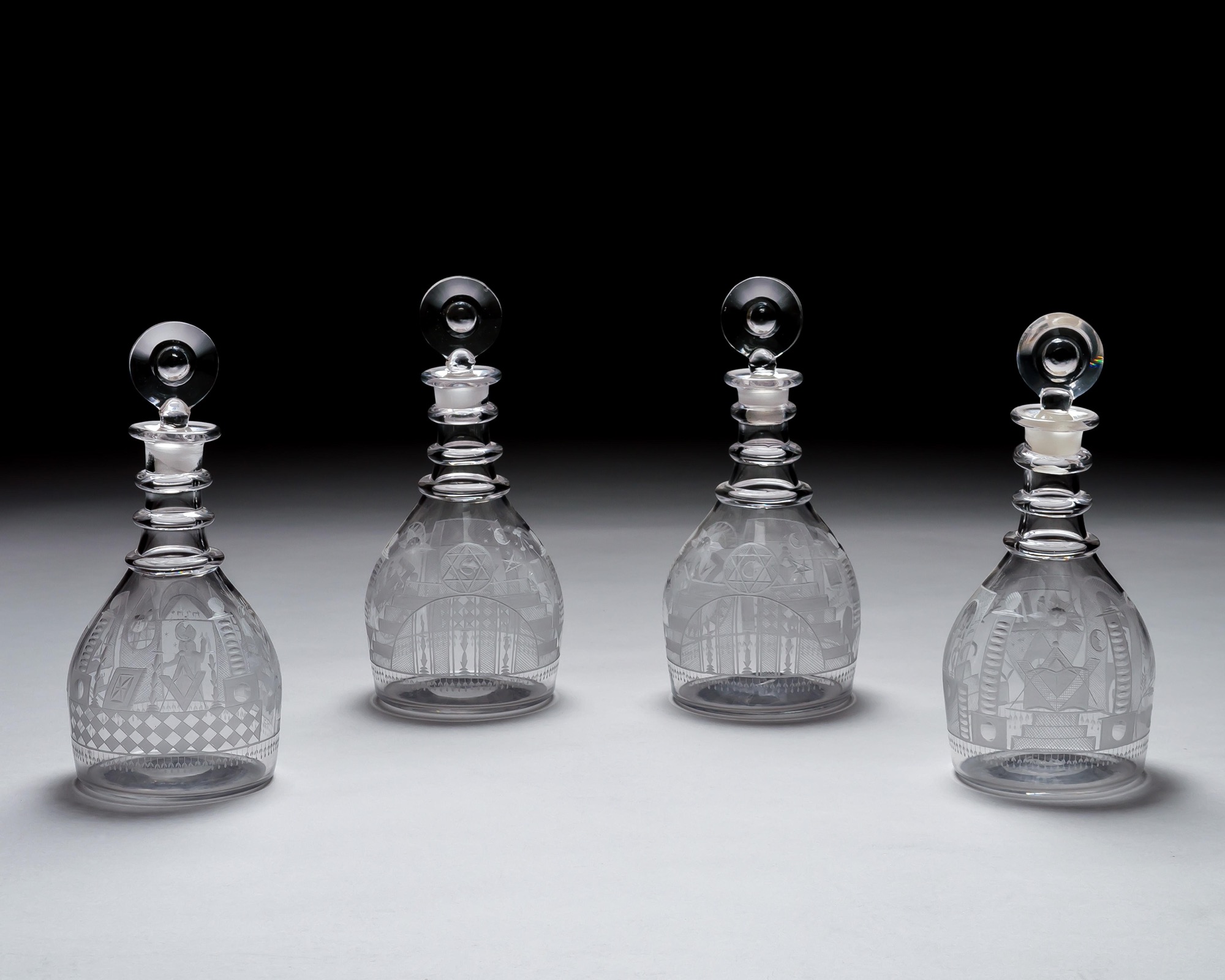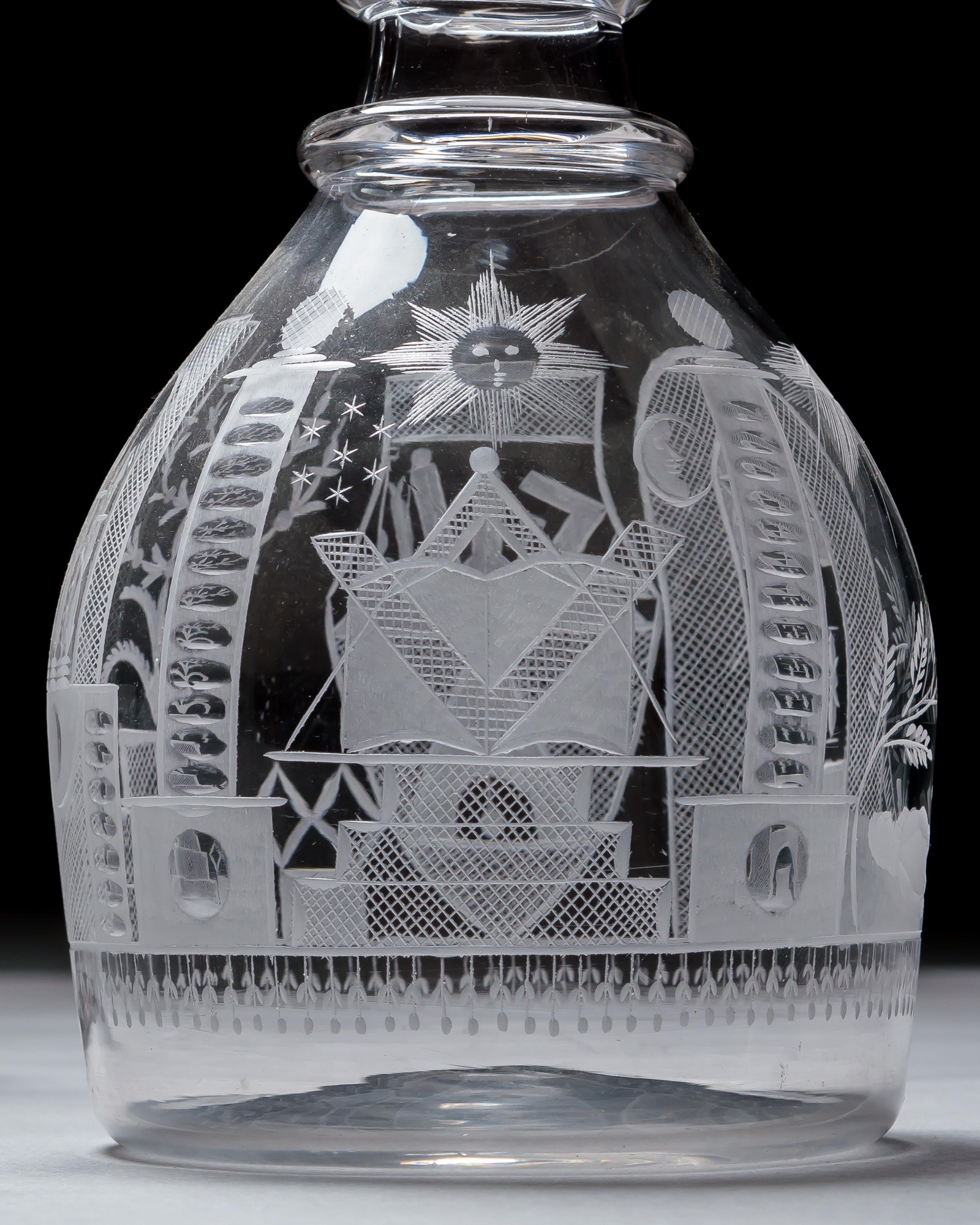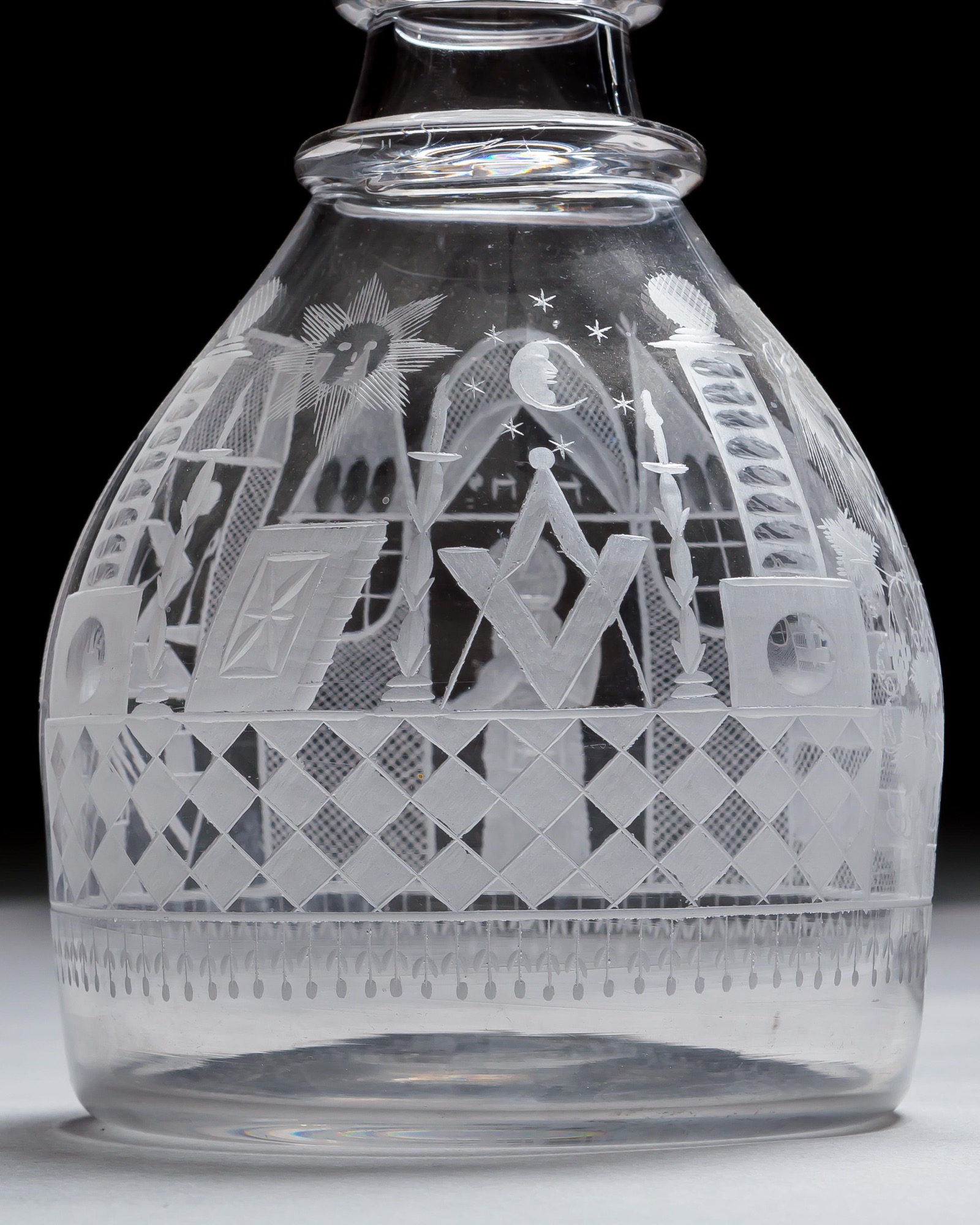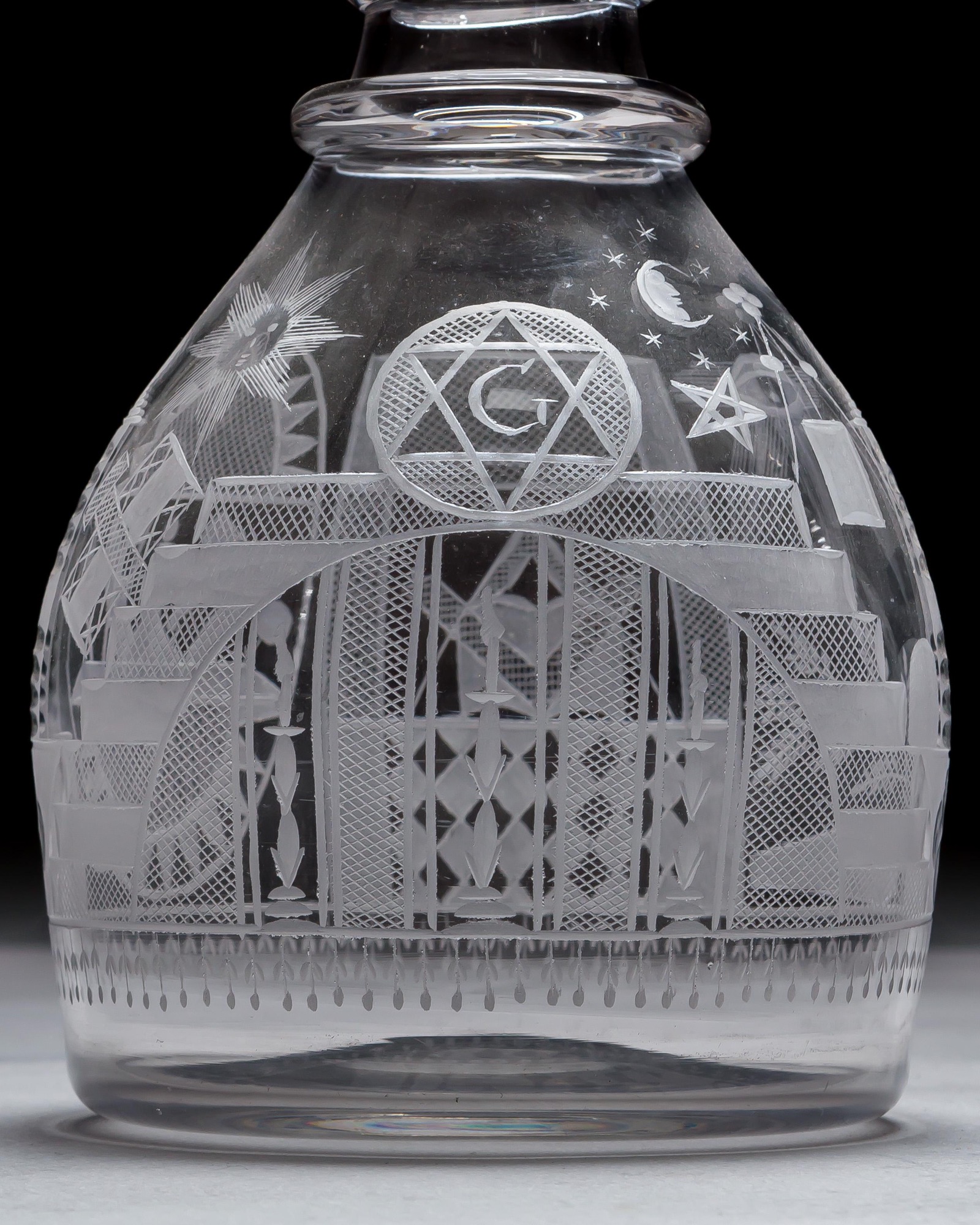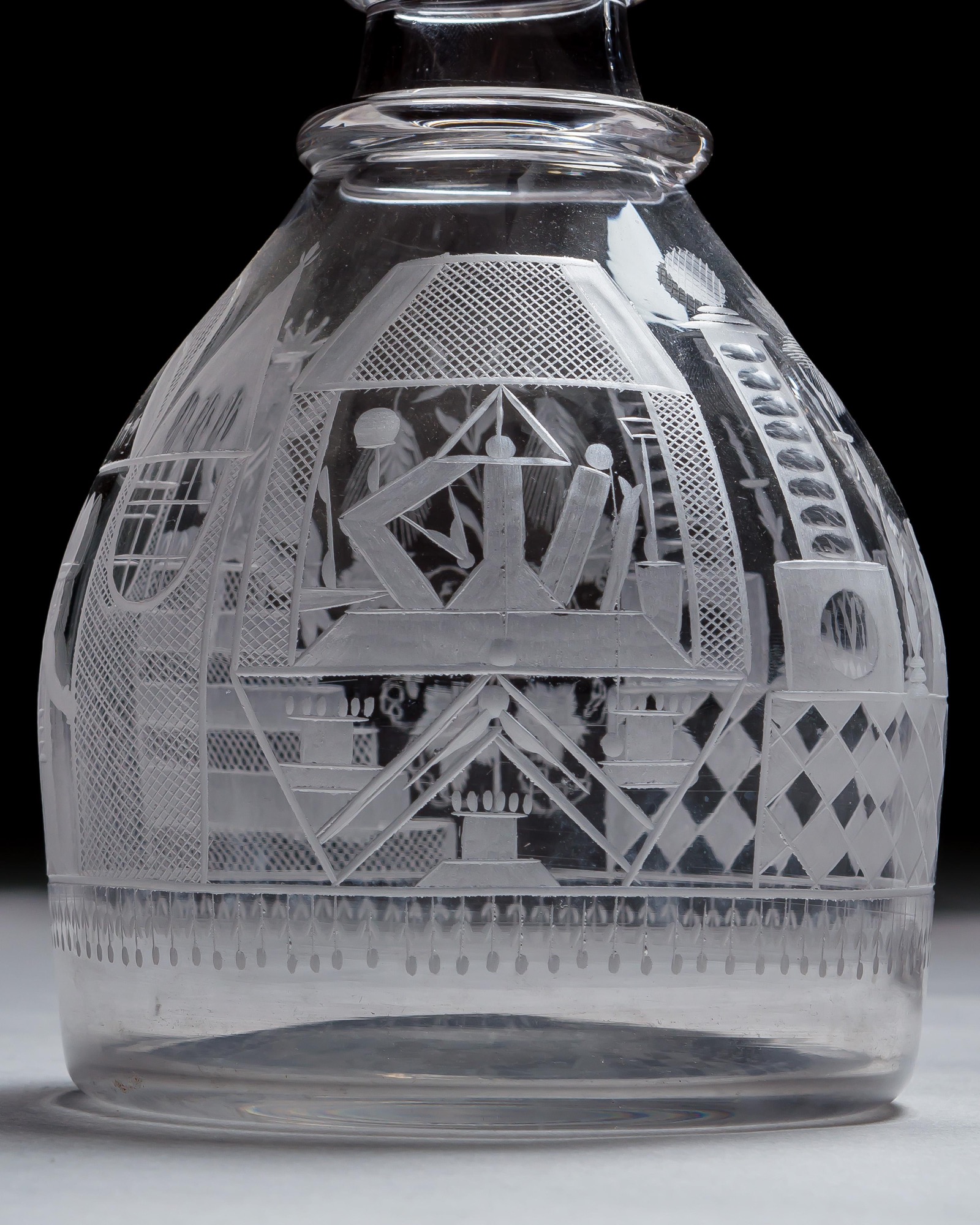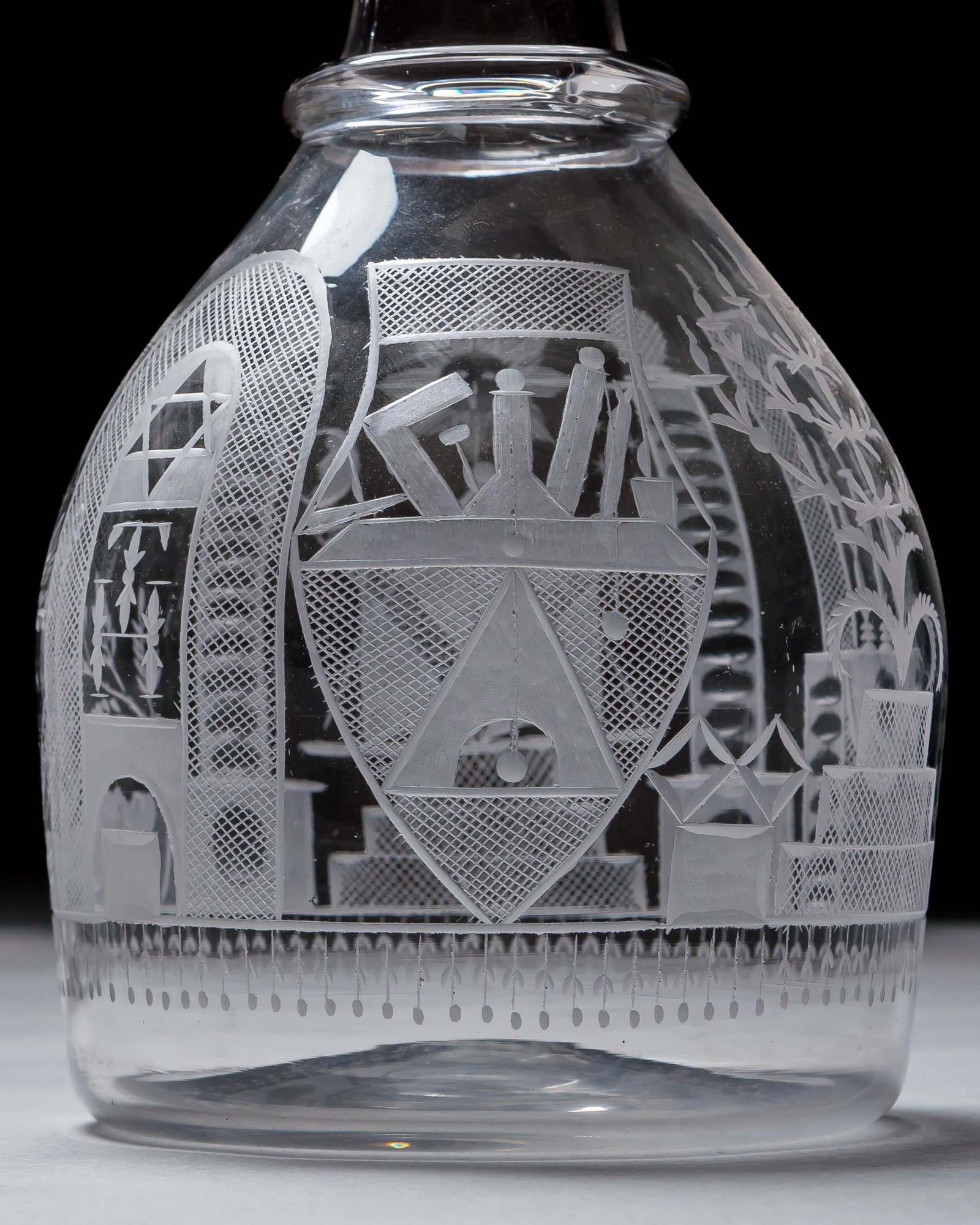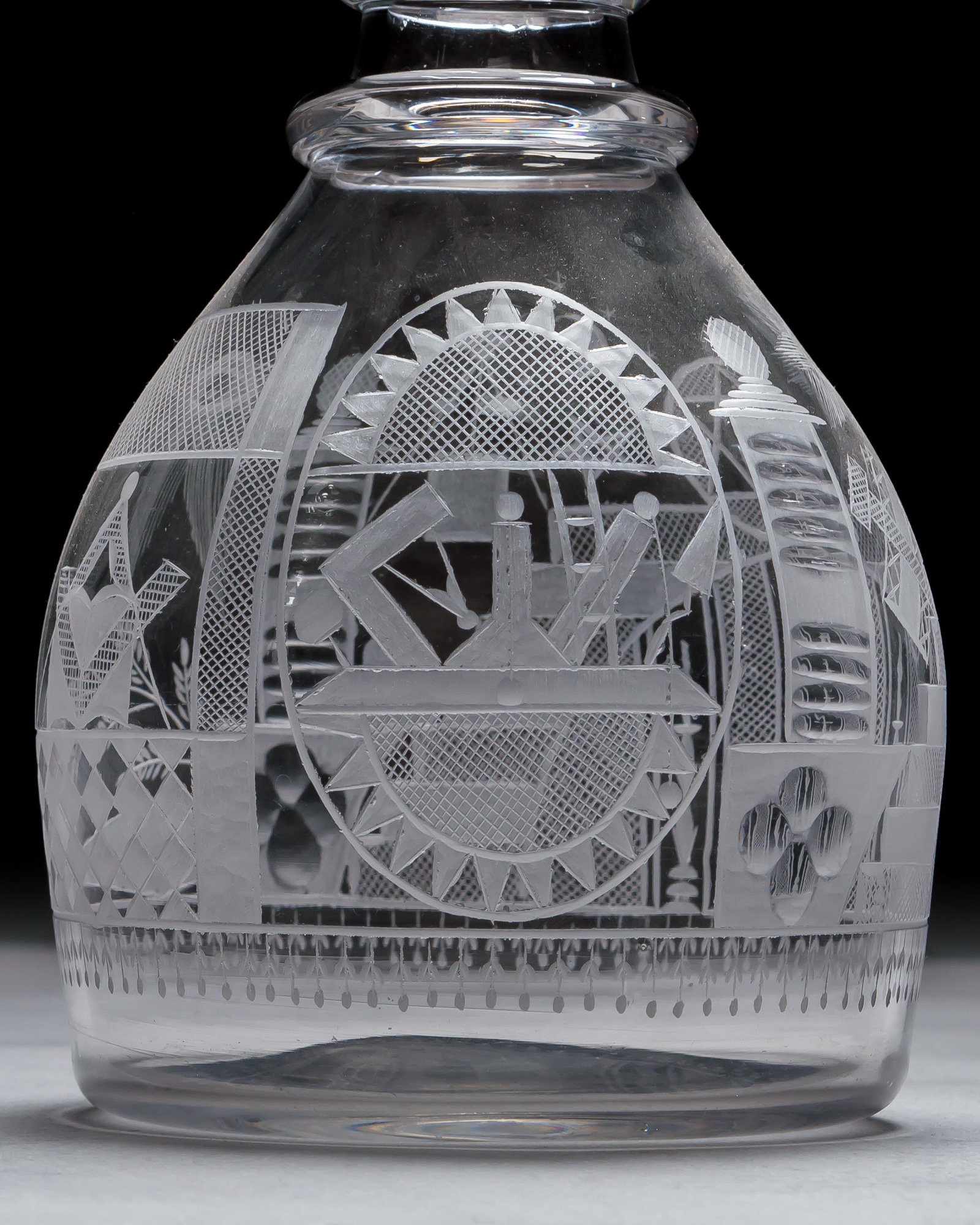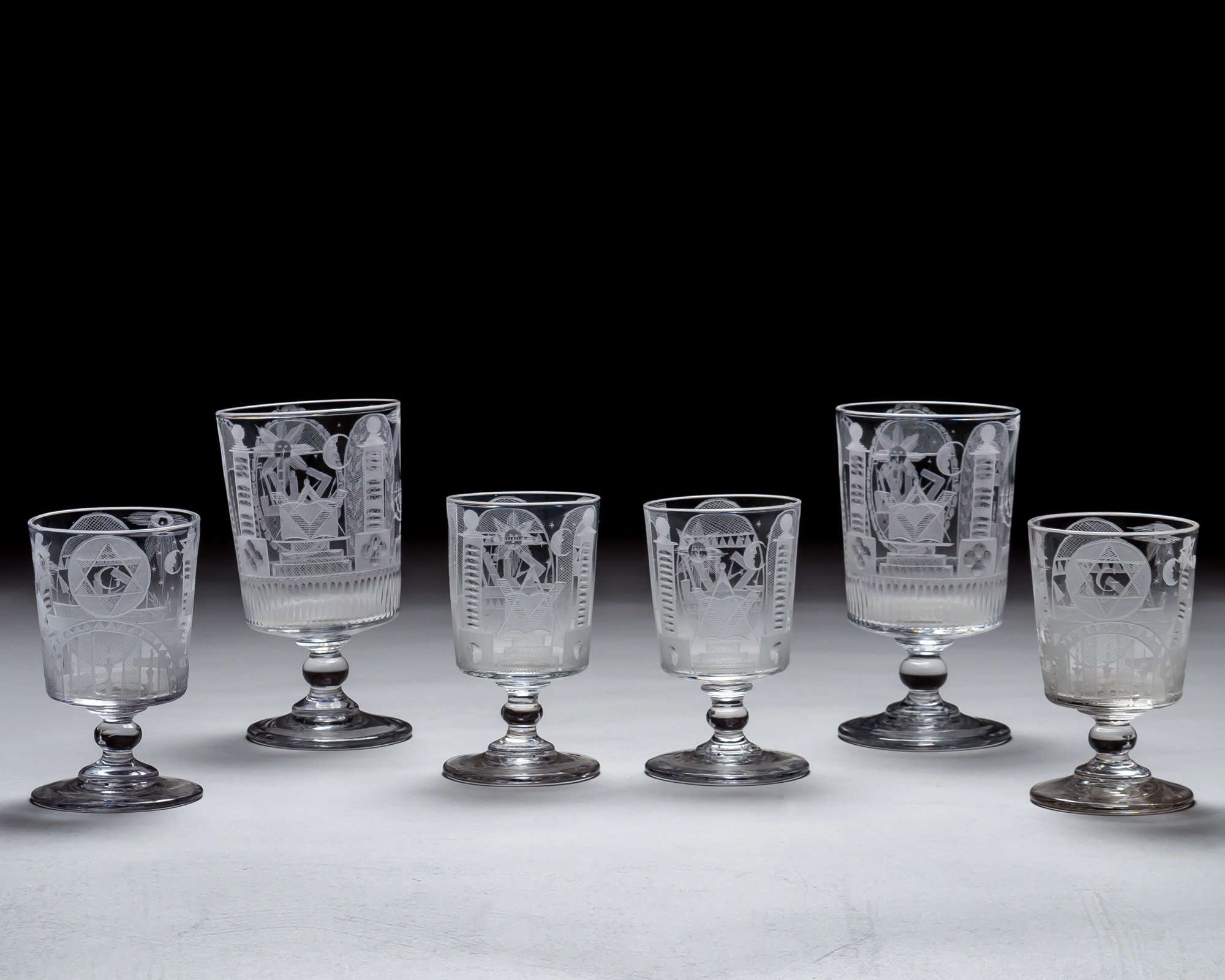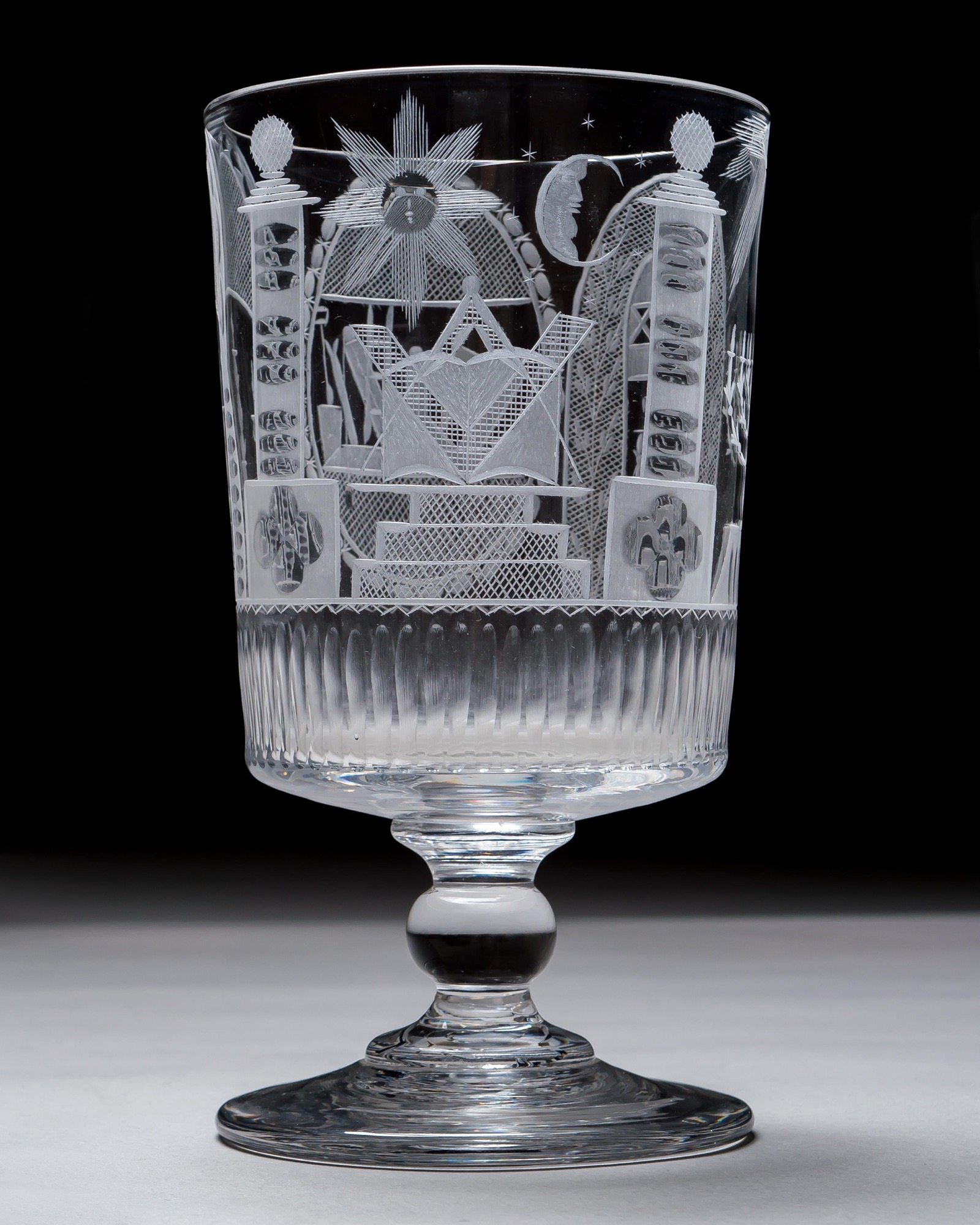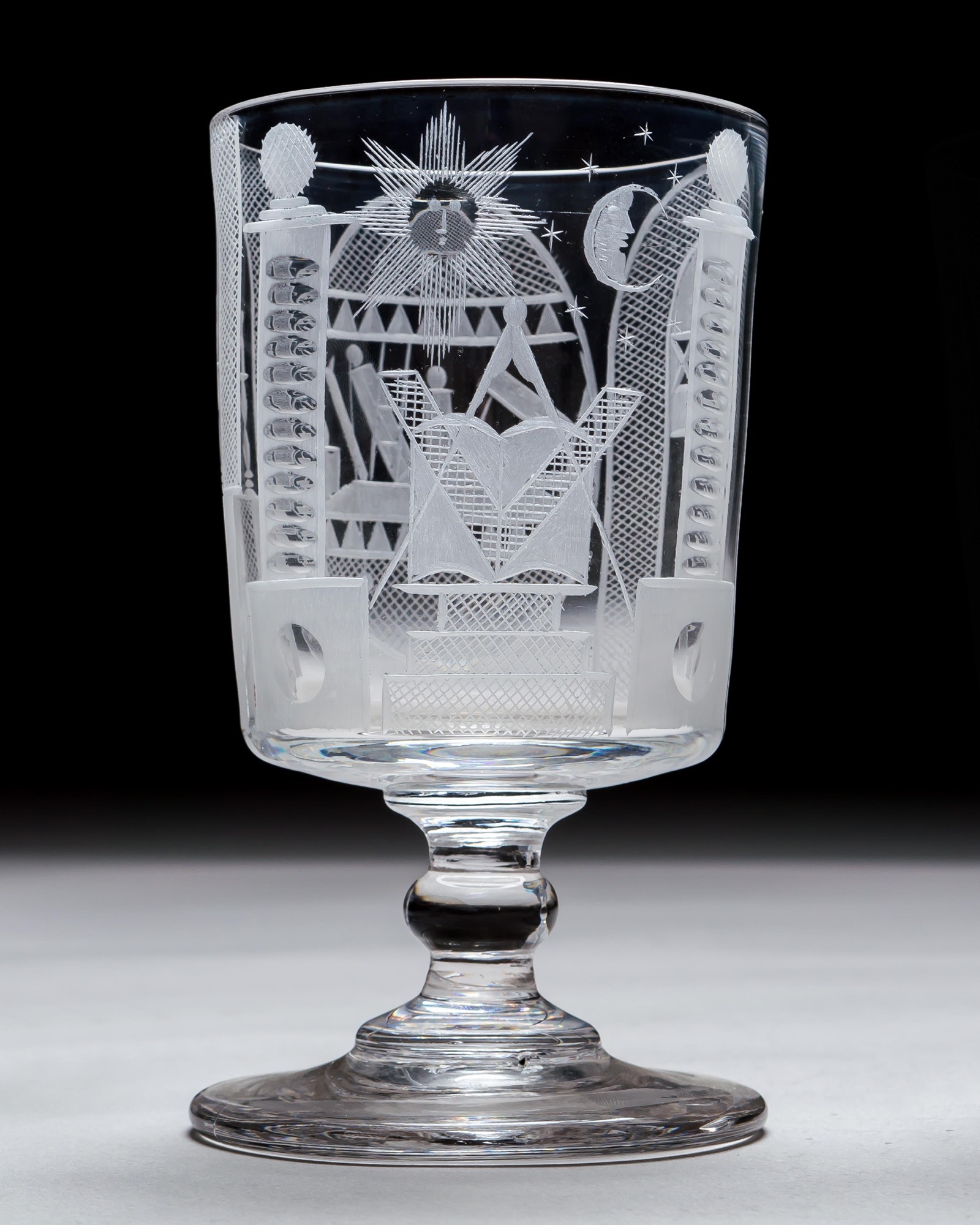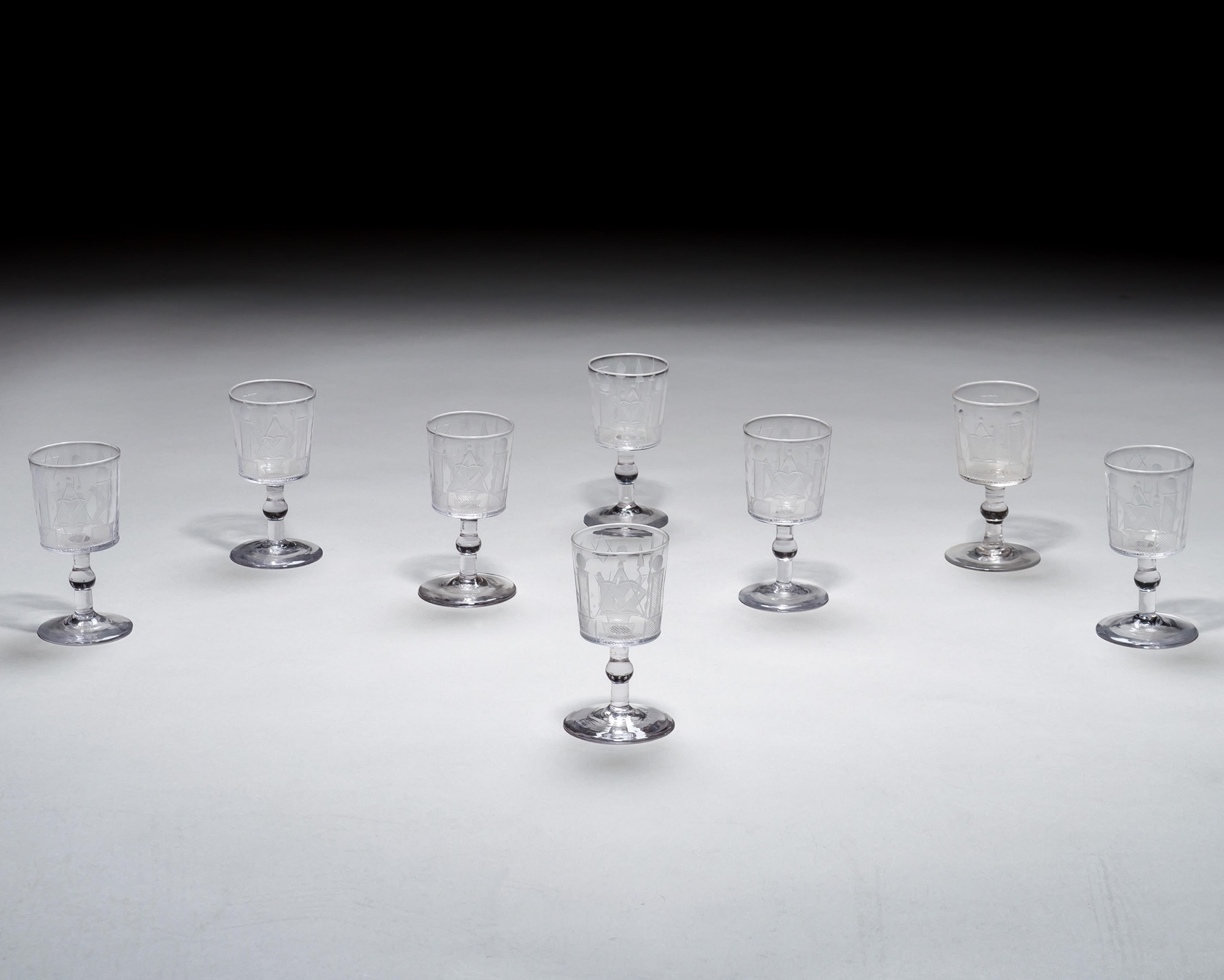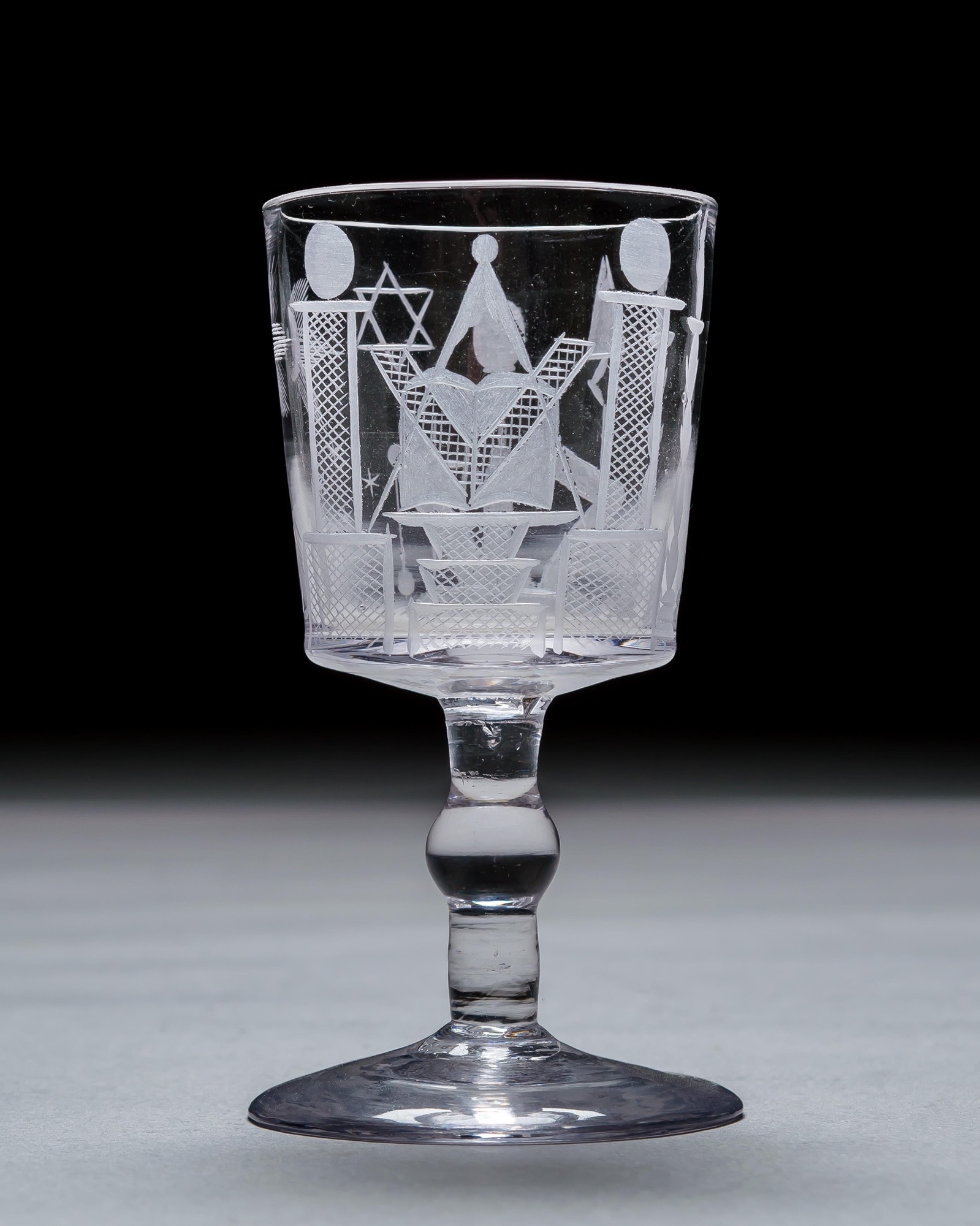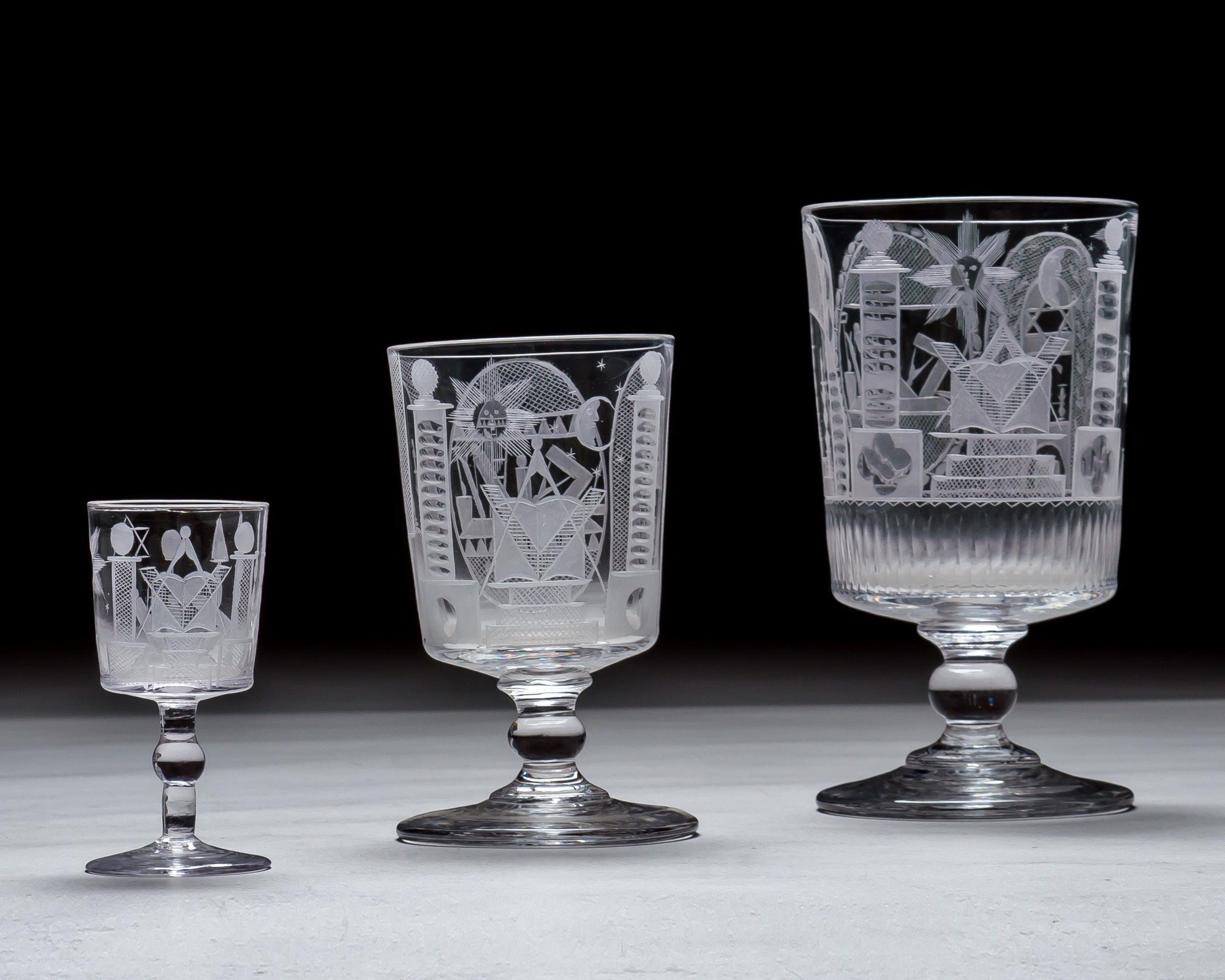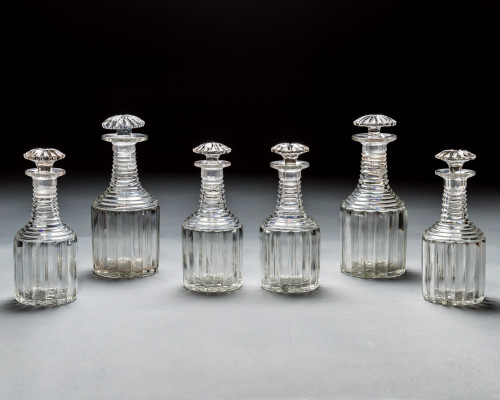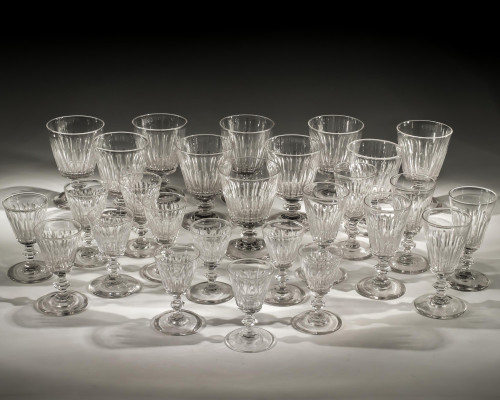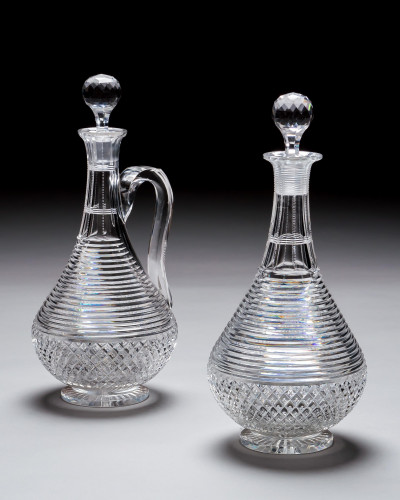AN ENGRAVED GLASS SERVICE OF MASONIC INTEREST ALONG WITH A COLLECTION OF CORRESPONDING MASONIC REGALIA
REF: FA1472
An unusually complete collection of Masonic banqueting glass, each piece prolifically engraved with Masonic symbols and devices, and regalia. Consisting of the following;
Glass:
Four Prussian-shaped decanters with triple-ringed necks and bullseye stoppers - Height 27cm (10 ¾ in)
Large Rummer - Height 24cm (9 ½ in), Diameter 19cm (7 5/8 in)
Rummer with cup-shaped bowl - Height 23cm (9 in), Diameter 16cm (6 3/8 in)
Two rummers with bucket-shaped bowls and fluted lower parts - Height 20cm (8 in)
Four rummers with bucket-shaped bowls - Height 16cm ( 6 ¼ in)
Eight wine glasses with bucket-shaped bowls - Height 11cm (4 3/8 in)
Regalia:
A printed, signed and sealed certificate awarded by the Freedom Lodge of Unadilla, New York State to Henry Halford, dated 14 March 1819
A printed, signed and sealed certificate dated 9 May 1831 from the Grand Lodge of Pennsylvania, Lodge 186
Four printed Masonic certificates after engravings by Amos Doolittle of New Haven, New York, unsigned
Three American Masonic aprons, comprising: an ivory silk apron embroidered with Masonic emblems with red fringe; two white kid leather aprons, one painted and the other printed with Masonic devices
A red silk sash with gold fringe and applied with a gold star.; a copper medal suspended from yellow silk ribbon, engraved Henry Halford above the initials K. P. H. J. W. and two tools.
It relates to the fascinating story of the Freemason Brother Henry Halford (b.1790) who travelled from England to America in the early 19th century to pursue his fortune in the cotton trade. While Masonic firing or 'toasting' glasses were made in large numbers, services of this extensive type including a variety of shapes are extremely rare survivors. Halford's glass service would have formed an important part of 'refreshments' which were central to ritualistic activities at Masonic meetings. As it would have been an important commission, presumably it may have been ordered to celebrate his elevation to Sublime Degree of Master Mason at the Grand Lodge of Pennsylvania on 9 May 1831. The certificate which accompanies this collection is signed by senior members of the Lodge.
It is very likely that Halford ordered his service from a glass manufacturer in England or Ireland. English manufacturers had made decanters 'curiously engrav'd with the Mason's Arms' which were readily available in the Colonies as early as 1763. By the early 19th century pottery, porcelain and glass were exported on a large scale for sale in the United States, as manufacturers strove to take advantage of this flourishing market. Halford's service is prolifically engraved with Masonic symbols and devices including: the All Seeing Eye, the Rose Croix Chapter, King Solomon and the Temple of Solomon, Moses, celestial devices, the Square and Compass, Masonic arches and pillars. Similar Masonic symbols are also seen on transfer-printed creamware produced by Wedgwood and on Liverpool and Worcester porcelain of the 1760s. John Sadler and Guy Green's engraving of 'The Arms of the Society of Free and Accepted Masons' appears on Wedgwood Queen's Ware of the 1760s, pieces of which are also densely packed with similar Masonic symbolism. Similarly Robert Hancock's engraving of the arms of the Grand Lodge which were used on both Worcester porcelain and Christian's Liverpool also feature Masonic emblems flanked by obelisks and globe monuments.
The emerging and very lucrative prospect of investment in agricultural land and forestry in parts of America gave many aspiring entrepreneurs the impetus to pursue new commercial opportunities there. Archival sources record that after initially declaring his intention to become an American citizen in 1816, Henry Halford eventually became an American citizen on 3 June 1822. His first port of call was New York, where contemporary Masonic records show that he was initiated into the Grand Lodge of New York (Freedom Lodge, No. 179) on 8 October 1818, he was then 'passed' on 12 November and then 'joined' on 10 December 1818. This was followed by his elevation to Master Mason in Philadelphia in 1831. It is not clear why he made the decision to sail back to England; it may have been a result of family circumstances, or it could perhaps have been a result of the financial challenges that some of the Lodges in Philadelphia faced. Whatever the reason, this prized group of glassware and regalia returned with him and his family on their voyage back to England in about 1840. Henry Halford returned to live near London as a successful businessman; he died in 1866 and is buried in Highgate Cemetery.
The aprons which accompany this collection appear to be American in origin and they all date to the first half of the 19th century when Halford was in America. The embroidered silk apron is decorated with Hebrew characters and the Craft of Freemasonry with the additional ceremonies of Mark Masonry and the Royal Arch. The painted leather apron with blue silk trim shows Craft Freemasonry and the printed apron is made from kid leather and shows the Royal Arch. The scene on the printed apron is taken from an engraving produced by the engraver Amos Doolittle of New Haven, New York; a certificate after the same engraving also features in the collection.
It is possible that many of the rummers, decanters and drinking glasses in museum collections were once part of larger services like the present lot. For three similarly engraved Irish Masonic decanters, see Andy McConnell, The Decanter, an Illustrated History of Glass from 1650, Suffolk, 2004, p. 114, pl. 163. There is a similarly engraved English rummer in the collection of the Corning Museum of Glass (accession number 79.2.278) which is engraved with the name of its owner.
- Period 1800-1849
- Year 1820
- Medium Crystal glass
- Country England
- Provenance Henrey Halford (b.1790-d.1866) Master Mason of the Grand Lodge of Pennsylvania
- EXHIBITIONS The Library and Museum of Freemasonry London, June 2002 - November 2012
